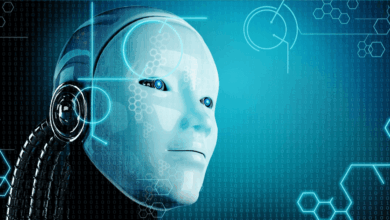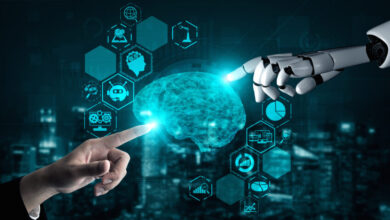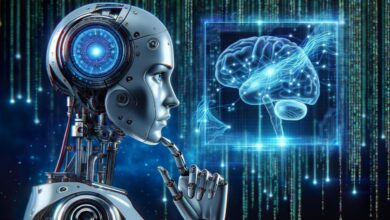Artificial Intelligence: Revolutionizing Industries Globally
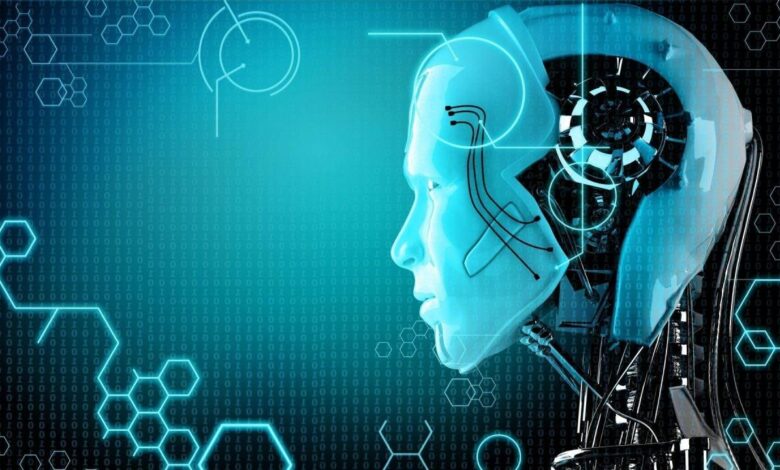
The sheer scale and speed of Artificial Intelligence (AI) adoption are transforming global commerce at a pace that is frankly astonishing, moving far beyond simple automation to fundamentally redefine what’s possible across every sector.
We’re no longer talking about theoretical concepts but highly practical, embedded tools that process gargantuan volumes of data, recognize complex patterns, and make instantaneous, highly accurate decisions that were once the exclusive domain of human expertise.
AI serves as a powerful new utility, much like electricity or the internet before it, but instead of delivering power or connectivity, it delivers cognitive capabilities—intelligence, learning, and reasoning—to any business process or application.
This transformative wave is being driven by the confluence of advanced machine learning algorithms, the decreasing cost of immense computing power (often delivered via cloud services), and the explosion of digital data produced by a hyper-connected world.
Understanding how to harness and apply AI isn’t just a competitive advantage anymore; it is rapidly becoming a core necessity for companies aiming to streamline operations, offer hyper-personalized customer experiences, and unlock unprecedented levels of efficiency and innovation.
From detecting subtle anomalies in medical scans to optimizing global supply chain logistics in real-time, the implementation of AI across various industries is generating tangible economic value and radically reshaping the skills required for the workforce of tomorrow.
AI Implementation in the Healthcare Sector
.webp)
The application of Artificial Intelligence in healthcare is arguably the most impactful, possessing the potential to save lives and radically change patient care delivery. AI systems excel at analyzing complex medical data faster and more reliably than humans.
A. Diagnostic Accuracy and Speed
AI algorithms analyze medical imagery, such as X-rays, MRIs, and CT scans, to detect signs of disease.
A. They can spot tiny, subtle anomalies indicating conditions like cancer or neurological issues earlier than the human eye.
B. This accelerated analysis dramatically cuts down the time between imaging and diagnosis, improving patient outcomes.
C. AI also helps triage urgent cases by prioritizing the scans that require immediate attention from a human radiologist.
B. Drug Discovery and Development
Pharmaceutical companies use machine learning to accelerate the costly and lengthy process of creating new medicines.
A. AI analyzes billions of molecular and biological data points to identify promising drug candidates and predict their efficacy.
B. This predictive capability reduces the need for expensive, time-consuming lab tests on compounds likely to fail.
C. It allows for the rapid development of personalized drugs based on an individual patient’s genetic profile.
C. Personalized Treatment and Patient Monitoring
AI ensures that treatment plans are tailored to the individual, not just the general population.
A. AI tools process patient records, genetic markers, and response histories to recommend the most effective treatment protocol.
B. Wearable devices and smart monitoring systems use AI to track a patient’s vital signs and behavior in real-time.
C. These systems can autonomously alert doctors or family members to sudden changes or emergencies, preventing critical incidents.
AI Implementation in the Financial Services Industry (Fintech)
The finance and banking sectors were among the earliest and most aggressive adopters of AI, primarily because of the huge volumes of transactional data they handle and the critical need for security.
A. Advanced Fraud Detection
AI systems are the frontline defense against financial crime and cyber attacks.
A. They monitor every single transaction globally, learning typical user spending patterns and behaviors.
B. Any sudden or unusual transaction—like a credit card charge from a foreign country when the user usually shops locally—is instantly flagged for review.
C. This rapid analysis helps stop fraudulent activity, such as credit card cloning, within seconds of it occurring.
B. Risk Management and Credit Scoring
AI is changing how financial risk is assessed, moving beyond simple static formulas.
A. Machine learning models analyze vast datasets to calculate lending risk with far greater precision than traditional credit scores.
B. They can forecast market volatility and predict which clients are most likely to default on loans, allowing banks to adjust their exposure proactively.
C. This leads to more equitable and accurate access to credit for a broader range of individuals and businesses.
C. Automated Trading and Robo-Advisors
In investment, speed and data processing are the ultimate competitive advantages.
A. Algorithmic trading systems use AI to execute trades at millisecond speeds, reacting to market fluctuations too fast for human traders to perceive.
B. Robo-advisors use AI to manage client investment portfolios automatically, rebalancing assets and adjusting risk based on the client’s goals and market conditions.
C. These automated services make sophisticated financial advice and wealth management accessible to the average retail investor.
AI Implementation in Retail and E-commerce
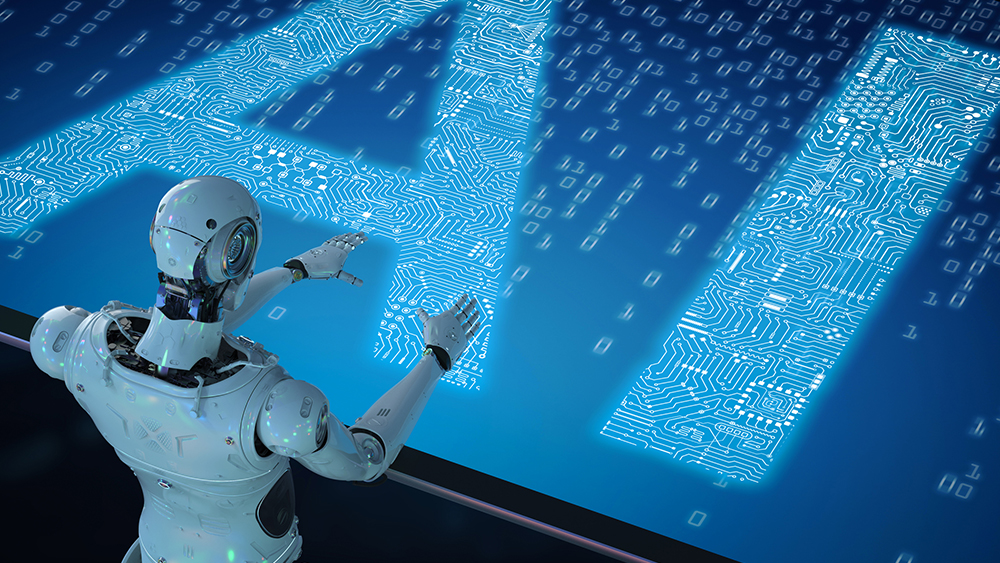
The competition in online and physical retail is fierce, and AI is the primary tool used to capture customer attention and optimize complex logistics.
A. Hyper-Personalized Customer Experience
AI-powered recommendation engines are the gold standard for modern e-commerce.
A. Platforms like Amazon analyze everything a customer views, searches for, and purchases to build a detailed personal preference profile.
B. They use this profile to suggest highly relevant products or content (like Netflix suggesting your next movie), increasing the likelihood of a sale.
C. AI also drives personalized pricing, targeted advertisements, and tailored email marketing campaigns for individual consumers.
B. Inventory and Supply Chain Optimization
Managing the flow of goods from manufacturer to consumer is a massive logistical challenge that AI excels at solving.
A. Predictive analytics forecast demand more accurately than ever, allowing retailers to know exactly how much stock to order and when.
B. This prevents costly situations like overstocking (leading to markdowns) or understocking (leading to lost sales).
C. AI algorithms optimize warehouse robot paths, sortation processes, and delivery routes for maximum efficiency and reduced shipping costs.
C. Customer Service and Engagement
AI provides instant, round-the-clock support to handle routine customer queries.
A. Conversational AI (chatbots and virtual assistants) manages the majority of frequently asked questions (FAQs), order tracking, and basic troubleshooting.
B. This frees human customer service agents to handle complex issues that require empathy or nuanced problem-solving.
C. AI can also analyze a customer’s tone (sentiment analysis) during a chat to quickly escalate the call if the person is becoming frustrated.
AI Implementation in Manufacturing and Industrial Operations
The application of AI in manufacturing is central to the movement toward Industry 4.0—a fully digitized and connected industrial environment.
A. Predictive Maintenance
This is a transformative shift from reactive or scheduled maintenance to a proactive, data-driven approach.
A. Sensors placed on industrial machinery and production lines collect vast amounts of data on vibration, temperature, and noise.
B. AI algorithms analyze this data in real-time to detect subtle patterns or anomalies that indicate an imminent equipment failure.
C. Companies can schedule maintenance before a breakdown occurs, preventing costly, unplanned downtime and extending equipment lifespan.
B. Quality Control and Inspection
AI systems are performing quality checks faster and more reliably than human inspectors.
A. Computer vision systems use high-resolution cameras to inspect every product coming off the assembly line.
B. The AI is trained to instantly identify defects, errors, or deviations from the required standard that a human eye might miss due to fatigue or speed.
C. This significantly reduces manufacturing waste and ensures a higher, more consistent quality of the final product.
C. Robotics and Automation
AI enhances the flexibility and intelligence of industrial robots.
A. Modern AI-driven robots use machine learning to adapt to slightly varying inputs or change their tasks without being fully reprogrammed.
B. They can navigate complex factory environments, collaborate safely with human workers, and handle delicate or precise assembly work.
C. This capability allows manufacturers to automate low-volume, high-mix production previously considered too complex for traditional automation.
AI Implementation in Transportation and Logistics
The movement of people and goods is becoming increasingly reliant on smart, AI-powered decision-making for safety and efficiency.
A. Autonomous Vehicles (AVs)
Self-driving technology represents the most visible, high-impact application of AI in transportation.
A. AI is the core intelligence that fuses data from countless sensors, cameras, and lidar units to perceive the vehicle’s surroundings.
B. It makes split-second decisions regarding speed, steering, and braking in complex, real-world driving environments.
C. While still evolving, the ultimate goal is to reduce human error, which accounts for the vast majority of all road accidents.
B. Logistics and Delivery Route Optimization
AI finds the most efficient, cost-effective way to get a product from point A to point B.
A. Algorithms analyze variables like traffic congestion, weather conditions, vehicle capacity, and delivery windows in real-time.
B. It dynamically adjusts delivery routes for a fleet of vehicles to save time, reduce fuel consumption, and meet promised delivery times.
C. This also includes optimizing the packaging and placement of items within a warehouse or truck to maximize space utilization.
C. Smart City Traffic Management
AI helps cities manage complex infrastructure to improve daily life for residents.
A. Traffic control systems use computer vision to analyze traffic flow, pedestrian movement, and congestion levels at intersections.
B. The AI then dynamically adjusts traffic light timings to optimize the movement of vehicles and reduce gridlock in busy areas.
C. This results in faster commutes, lower fuel emissions, and more efficient public transportation systems.
AI Implementation in Education and Entertainment
AI is transforming how we learn, consume media, and interact with digital content, creating deeply personalized experiences in both areas.
A. Personalized Learning in Education
AI is creating a truly tailored educational experience for every student.
A. E-learning platforms use AI to track a student’s performance, identifying areas where they struggle or excel.
B. The system then adapts the lesson materials, tests, and homework difficulty to match the student’s individual learning pace and style.
C. AI also automates grading of standardized tests and provides instant feedback, freeing up teachers to focus on individualized student engagement.
B. Content Recommendation and Curation (Entertainment)
Streaming services rely heavily on AI to keep users engaged and watching.
A. Platforms like Netflix and Spotify use sophisticated algorithms to analyze a user’s viewing or listening history, skipping habits, and ratings.
B. This data is used to generate highly accurate predictions of what the user is most likely to enjoy next, increasing session length and retention.
C. AI also influences content production, helping studios decide which themes, genres, and actors are most likely to appeal to their diverse audience.
C. Generative Content Creation
The rise of Generative AI (GenAI) is revolutionizing digital media production.
A. Tools can now instantly create realistic images, compelling video content, and detailed text scripts from simple human prompts.
B. This dramatically reduces the time and cost associated with producing marketing copy, digital art, and basic animated assets.
C. AI is also used to create more intelligent, adaptive Non-Player Characters (NPCs) in video games, leading to a richer and more realistic player experience.
Essential Business and Operational Applications of AI
Beyond specific industry applications, AI offers core operational benefits that apply to almost every organization.
A. Automation of Routine Business Processes
AI bots automate the tedious, repetitive digital tasks that consume employee time.
A. This includes handling data entry, processing invoices, managing digital documents, and reconciling data across multiple systems.
B. Robotic Process Automation (RPA) leverages AI to mimic human interactions with software interfaces, leading to end-to-end efficiency.
C. Automating these tasks reduces human error and frees employees to focus on strategic, high-value activities.
B. Enhanced Decision-Making (Cognitive Insights)
AI’s greatest asset is its ability to analyze massive datasets and extract actionable intelligence.
A. It utilizes predictive analytics to forecast everything from future sales trends to potential equipment failures.
B. AI can quickly identify complex patterns and correlations that are invisible to human analysts due to the sheer volume of data.
C. This capability enables leaders to make proactive, data-informed strategic decisions, rather than relying on intuition or lagging indicators.
C. Cybersecurity and Threat Detection
AI provides the necessary speed to defend against increasingly sophisticated digital attacks.
A. AI systems continuously monitor network traffic, looking for unusual activities or signatures that indicate a potential breach.
B. They can isolate and neutralize new or unknown (zero-day) threats faster than human security teams can react.
C. AI-driven security platforms also prioritize which threats are most critical, preventing security teams from being overwhelmed by false alarms.
Conclusion
Artificial Intelligence has permanently cemented its status as the bedrock of modern industry.
Its power is not just in automation, but in fundamentally augmenting human cognitive abilities.
Every major sector, from medicine to finance, is being deeply restructured by AI-driven tools.
The competitive landscape now rewards companies that successfully integrate intelligent processes.
AI is transforming products, enhancing customer experiences, and relentlessly optimizing internal operations.
The shift toward proactive, predictive decision-making is creating unprecedented levels of efficiency.
Businesses must invest in AI adoption to ensure long-term viability and to remain globally competitive.
This technology is paving the way for a more productive, safer, and ultimately more innovative future.

